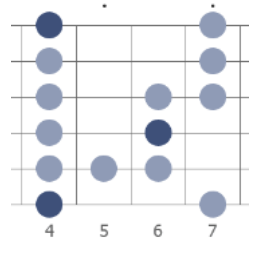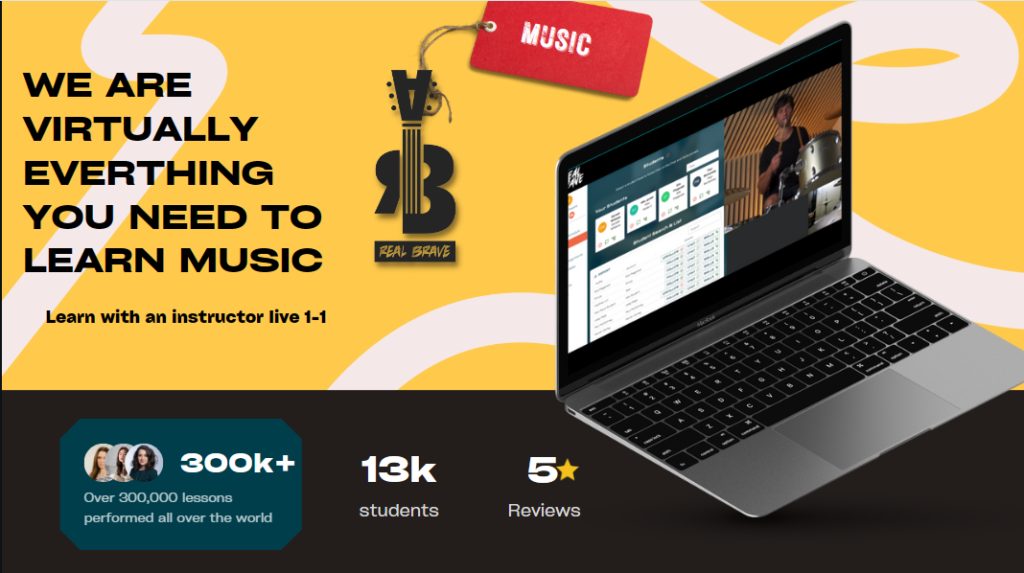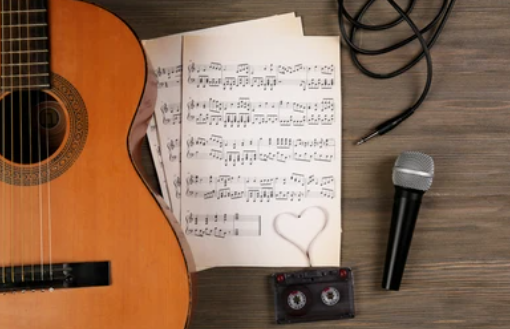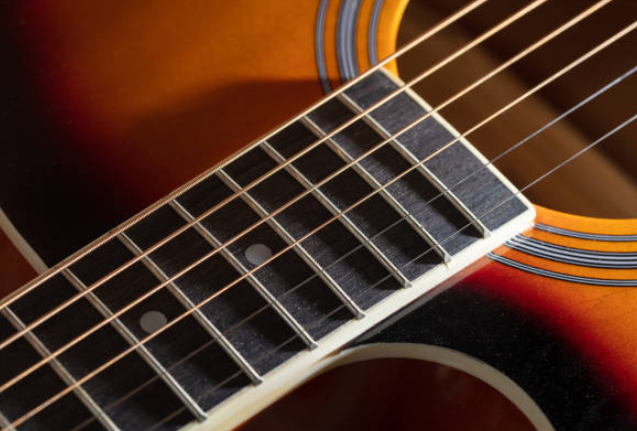Easy! How To Play The Ab Blues Scale on Guitar

Welcome back, guitar enthusiasts! Today, we’re diving into the soulful sounds of the Ab Blues Scale. This scale is a staple in blues music, and mastering it will add much character and emotion to your playing. Whether you’re a beginner or looking to expand your blues repertoire, this guide will walk you through the essentials.
What is the Blues Scale?
The blues scale is a minor pentatonic scale with an added “blue note” – the diminished fifth (or augmented fourth). This note gives the scale its distinctively soulful and expressive sound. The Ab Blues Scale consists of the following notes: Ab, B, Db, D, Eb, and Gb.
The Scale Formula
The formula for the blues scale is:
Root – Minor third – Perfect fourth – Diminished fifth (Blue note) – Perfect fifth – Minor seventh
For the Ab Blues Scale, this translates to:
Ab (Root) – B (Minor third) – Db (Perfect fourth) – D (Diminished fifth) – Eb (Perfect fifth) – Gb (Minor seventh)
Playing the Ab Blues Scale on Guitar
Let’s break it down position by position. We’ll start with the most common shape at the 4th fret.
4th Position
Here’s the tab for the Ab Blues Scale starting at the 4th fret:

- 6th String (Low E): 4th fret (Ab) with your index finger, 7th fret (B) with your pinky finger.
- 5th String (A): 4th fret (Db) with your index finger, 5th fret (D) with your middle finger, 6th fret (Eb) with your ring finger.
- 4th String (D): 4th fret (Gb) with your index finger, 6th fret (Ab) with your ring finger.
- 3rd String (G): 4th fret (B) with your index finger, 6th fret (Db) with your ring finger, 7th fret (D) with your pinky finger.
- 2nd String (B): 4th fret (Eb) with your index finger, 7th fret (Gb) with your pinky finger.
- 1st String (High E): 4th fret (Ab) with your index finger, 7th fret (B) with your pinky finger.
6th Position

- 6th String (Low E): Place your index finger on the 6th fret (Ab). Place your pinky finger on the 9th fret (B).
- 5th String (A): Place your index finger on the 6th fret (Db). Place your middle finger on the 7th fret (D). Place your ring finger on the 8th fret (Eb).
- 4th String (D): Place your index finger on the 6th fret (Gb). Place your ring finger on the 8th fret (Ab).
- 3rd String (G): Place your index finger on the 6th fret (B). Place your ring finger on the 8th fret (Db). Place your pinky finger on the 9th fret (D).
- 2nd String (B): Place your index finger on the 7th fret (Eb). Place your ring finger on the 9th fret (Gb).
- 1st String (High E): Place your index finger on the 6th fret (Ab). Place your pinky finger on the 9th fret (B).
Tips for Practicing the Ab Blues Scale
- Start Slow: Begin by playing the scale slowly to ensure each note rings out clearly. Focus on accuracy before speed.
- Use a Metronome: Practice with a metronome to keep your timing consistent. Start with a slow tempo and gradually increase the speed.
- Improvise: Once you’re comfortable with the scale, try improvising with it. Play along with a blues backing track in Ab to get a feel for how the scale fits into different musical contexts.
- Explore Different Positions: Learn the scale in various positions on the neck to increase your versatility. This will also help you understand the fretboard better.
Applying the Ab Blues Scale
The Ab Blues Scale is useful for solos and creating riffs and licks that add a bluesy feel to your playing. Here are a few ideas to get you started:
- Bend the Blue Note: Bend the D (diminished fifth) up a half step to Eb for a classic blues sound.
- Double Stops: Play two notes together, such as the Ab and B, for a thicker, richer sound.
- Slides: Use slides to move between notes smoothly and add expressiveness to your playing.
Final Thoughts
The Ab Blues Scale is a powerful tool in any guitarist’s arsenal. By mastering this scale, you’ll be able to inject your playing with a soulful, expressive quality that’s characteristic of the blues. Take your time with it, practice regularly, and most importantly, have fun!
Happy playing, and keep the blues alive!
If you’re interested in learning an instrument, at Real Brave, we offer an incredible experience like no other place in music lessons for kids and adults by guiding them from the beginning stages of getting to know an instrument all the way through performing for family and friends on stage. Our instructors come from all over the world, bringing extensive experience on a wide range of instruments. Click below and book a free lesson with us!
Author: Daniel Powers Jr, the founder of Real Brave™, serves as the chief inspiration to thousands of students in the Real Brave music instruction program. He’s also the visionary behind PracticePad™, an online platform for live one-on-one online music lessons, lesson tracking, and scheduling. Beyond his entrepreneurial pursuits, Daniel leads a non-profit organization that provides formerly homeless children with access to music education, making a profound impact on their lives. His unwavering dedication to music, innovation, and education continues to inspire individuals to reach their fullest potential while creating positive change in communities. Follow Real Brave on all the socials:
youtube.com/@realbraveinc
twitter.com/realbraveinc
https://www.tiktok.com/@realbraveinc
instagram.com/realbraveaudio
facebook.com/realbraveinc






